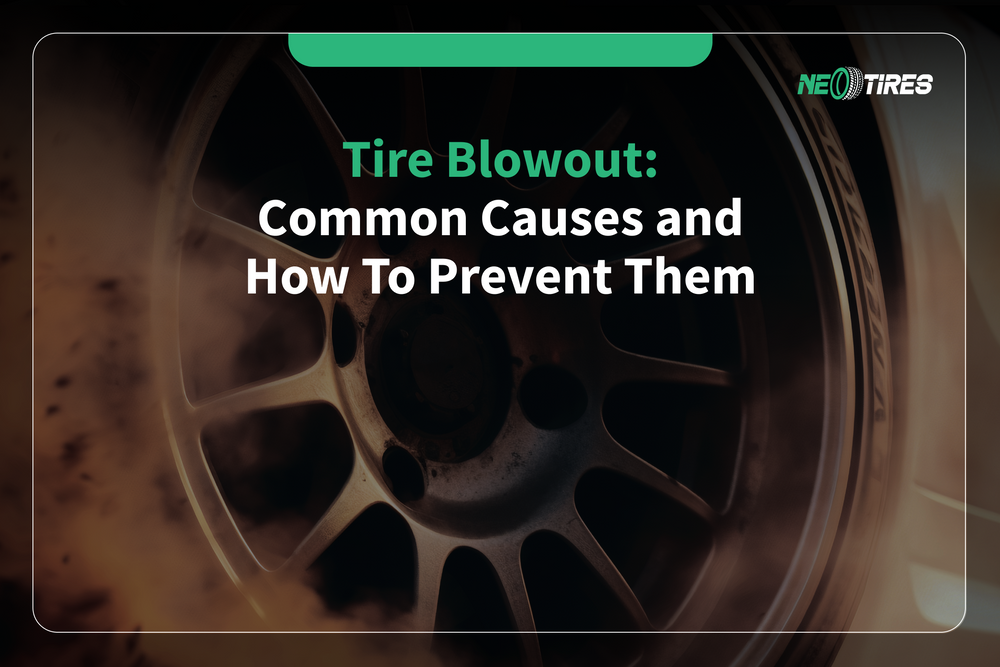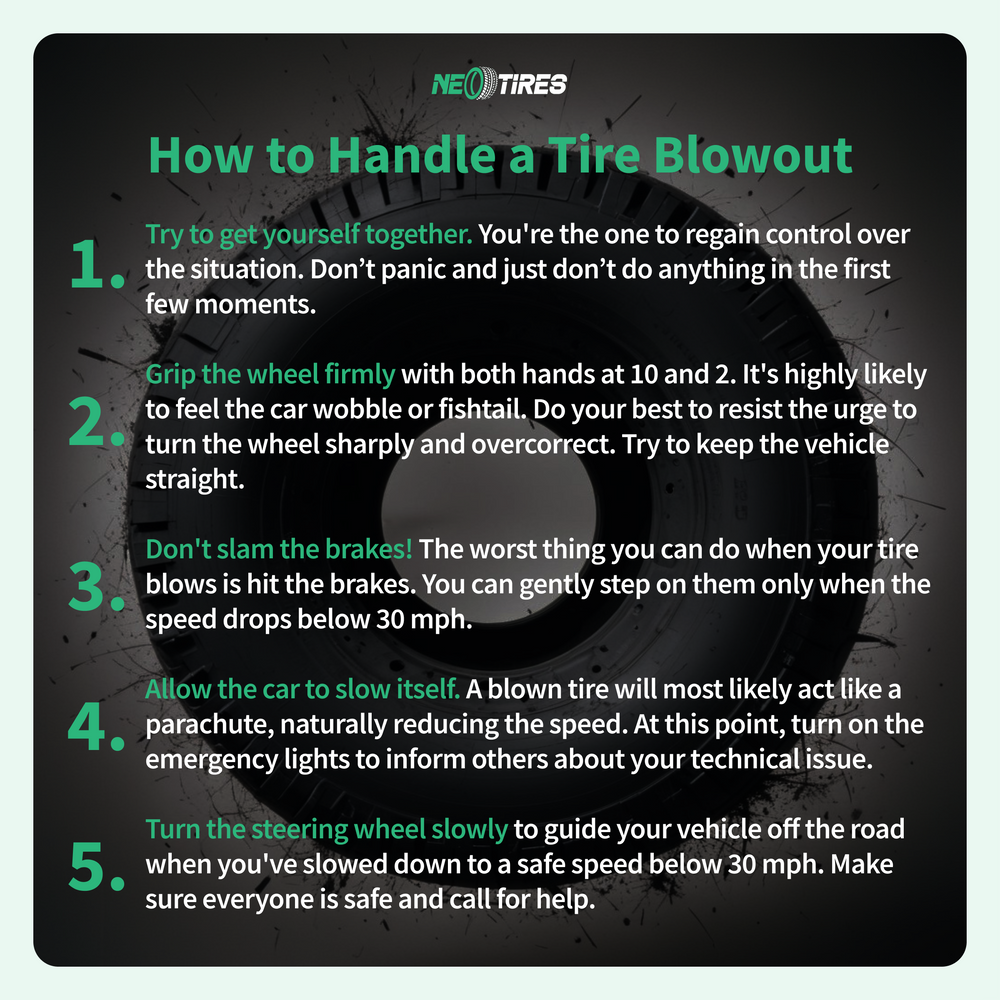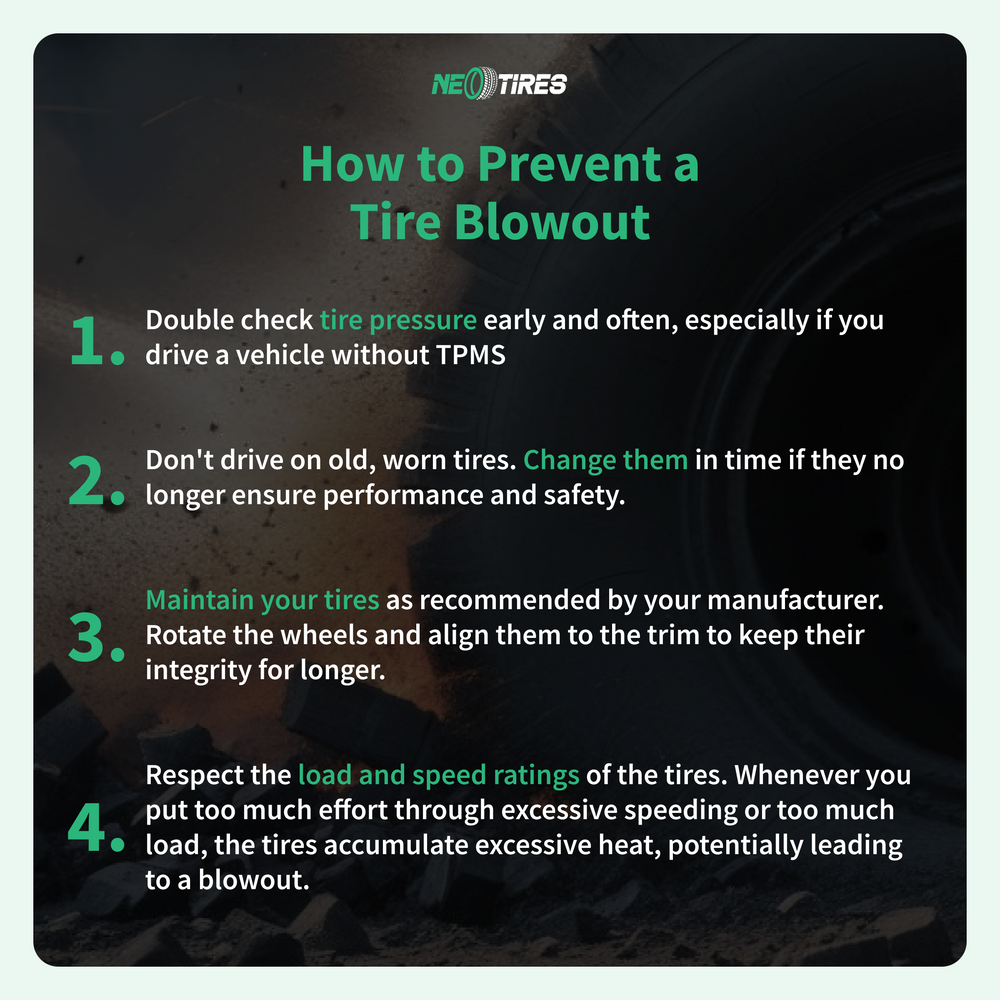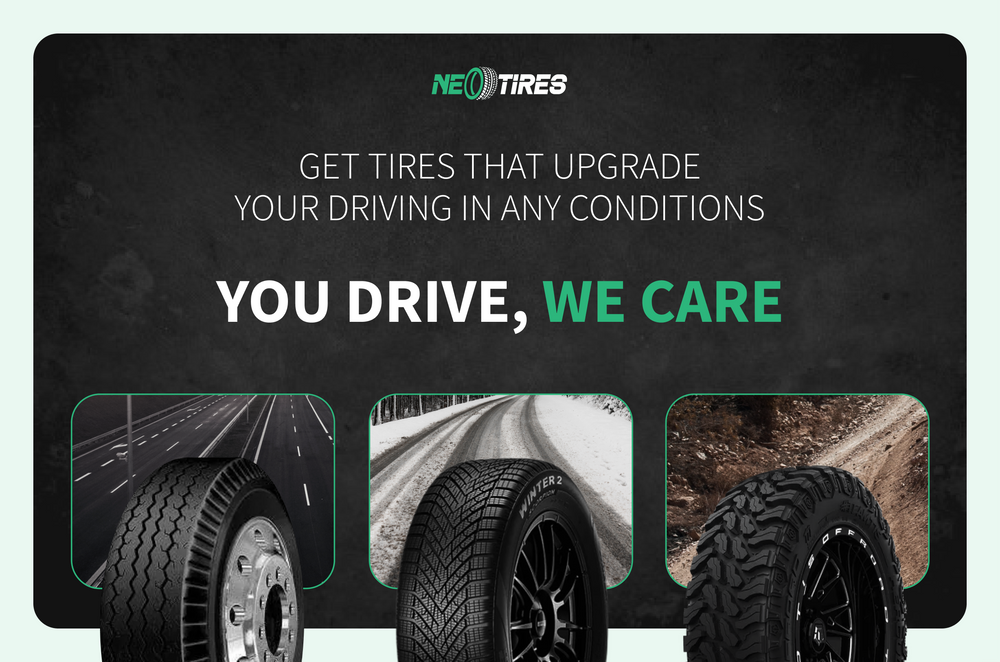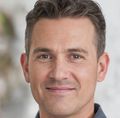Tire blowouts can pose serious risks to drivers and passengers, mainly when not properly managed. An unexpected tire failure can cause the driver to lose control of the vehicle, potentially damaging his car. This section focuses on the factors causing a tire blowout and practical steps to prevent one.
What Is a Tire Blowout?
A tire blowout is sudden tire damage that results in instant air loss and resembles a moderate to severe explosion while the car is in motion. Unlike flat tires, which lose air gradually, blowouts occur instantly and are often accompanied by loud noises, difficult handling, and vibrations. They are dangerous, especially at high speeds, and can cause the driver to lose control of the vehicle. Typically, the damage caused by a tire blowout is not repairable.
Factors Leading to Tire Blowout
Five factors at least lead to a tire blowout, including tire underinflation, vehicle overload, poor tire condition (aged tire, uneven tread wear, bald tread, cracks, and blisters), high speed, and road hazards.
Tire Underinflation
A tire is likely to blow out if it does not have enough air. Underinflation makes the tire too flexible, especially on the outer edges, increasing heat build-up and speeding up the tread wear process. Constant underinflation affects tire integrity, weakening it over time and increasing the blowout potential. Due to excessive heat, a tire blowout due to underinflation is especially likely at high speeds and long distances.
Overloading
A tire blowout is likely whenever a tire's load capacity exceeds due to excessive stress on its structure. Excessive load compresses the tire, leading to internal heat buildup and deformation. The tire can fail unexpectedly, especially on rough terrain or long trips.
Poor Tire Condition
Poor tire condition (excessive wear, uneven wear, cracks) can lead to tire blowout due to compromised resistance and strength. Excessive or uneven wear, cracks, and aged rubber create weak points in the tire structure, making it sensitive to sharp objects on the road. Similarly, weak tire areas may expand under pressure, especially at high speeds, causing severe blowouts.
High Speeds
A tire will likely undergo blowout at high speeds because of heat buildup and excessive friction, significantly when exceeding tire speed ratings. The risk of tire blowout at high speed is also magnified due to the reduced reaction time available to address tire issues.
Road Hazards
Uneven surfaces, sharp objects, and potholes can cause severe tire damage, leading to an immediate blowout. Depending on the road hazard, this will likely occur at both high and low speeds.
How To Manage A Tire Blowout?
The best practice for managing a tire blowout is to gather yourself and stay calm. Drivers should maintain a firm grip on the steering wheel (with both hands) to ensure steady vehicle control, avoid slamming on the brakes (apply gentle and intermittent braking instead for a natural vehicle slowing down), steer the vehicle to a safe spot once they have regained control, and turn on the hazard light until they replace the tire or wait for assistance.
How To Prevent A Tire Blowout?
The following proactive maintenance measures and driving habits can help prevent a tire blowout:
- regular tire pressure checks and adjustment
- regular tire inspection to ensure optimal tire condition
- awareness of tire speed and load ratings to avoid excessive heat buildup and overloading
- regular tire maintenance to avoid poor tire condition (rotation, alignment, balancing)
- cautious driving on poor roads and avoid driving at high speed (especially with older tires)
Drivers can reduce blowout risks by understanding tire blowout causes and respecting prevention measures.
Tire Blowout: FAQs
Can a Tire Puncture Cause a Blowout?
Yes, a puncture in a tire can lead to a tire blowout. However, this does not mean that any punctured tire will necessarily cause a blowout. The blowout is likely when the punctured tire keeps rolling on the road, causing additional friction. The punctured tire should be patched or replaced to avoid a tire blowout, depending on the degree of damage.
What is The Difference Between a Flat Tire and a Blowout?
A flat tire gradually loses air and can still roll on the road, even if this is not recommended. It can be repaired, which allows further use. However, a blowout causes the tire to explode and lose air instantly. Due to severe damage, a tire can't be repaired and reused after a blowout.
| Tire Blowout | Flat Tire | |
|---|---|---|
| Definition | Sudden and explosive loss of air pressure, causing severe tire damage | Gradual loss of air pressure, often due to a puncture or minor damage |
| Symptoms | Loud noise, vibration, difficulty handling, loss of vehicle control | Slow air leakage, underinflation, and gradual tire flattening |
| Causes | Underinflation, overloading, damage, high speeds, road hazards | Valve stem damage, punctures from nails or sharp objects |
| Risk Level | High due to loss of control, especially at high speeds. | Mild to moderate: allows for controlled driving until repaired or replaced |
| Can Be Repaired? | Usually, no | Usually, yes |
Tire Blowout vs Flat Tire
How Bad is a Tire Blowout?
A tire blowout is dangerous as it can make the driver lose control of the vehicle, leading to potential collisions and accidents. During a blowout, the vehicle pulls aside chaotically, making stabilizing and regaining traction difficult. In most cases, a tire blowout cannot be subject to repair.
Is a Tire Blowout Loud?
Yes, but it's not a rule set in stone. A tire blowout generates a loud boom that the driver feels strongly in the cabin. After the boom, the driver usually hears the tire deflating rapidly, emitting a specific sound of air discharge.
Can a Tire Blowout At Low Speeds?
A blowout can occur even at low speed, although it is less common. If the tire is in bad condition and its sidewall is compromised, the blowout can even occur when the vehicle stands still.
Can You Drive on a Blowout?
It is not recommended to continue driving following a blowout. The driver should slow down gradually to the nearest safe place. The blown-out tire cannot roll quickly because of its severely compromised condition. The driver should counter-steer to balance in the direction he wants to go until full stop. No brake slamming! Pull the brakes gradually and intermittently to gain traction.
Avoid Dangerous Blowouts—Upgrade Your Tires Today!
Underinflated, damaged, or old tires can cause a sudden blowout. If your tires show signs of wear and damage that are too severe, it's time to consider a replacement.
At NeoTires, you can access an extensive catalog of products from trusted brands for any needs and conditions. Call our trained assistants if you need help. We'll match your unique requirements with the right tires.
Why Trust Us?
NeoTires has been in the tire industry for more than 5 years. During this time, we became professionals in this field, providing high-quality products and services. Our team gathers experts in the automotive field, qualified mechanics, and trained customer service representatives who work for a common goal: to provide top-notch assistance in all tire-related matters. Drive safe and choose your tires wisely!




